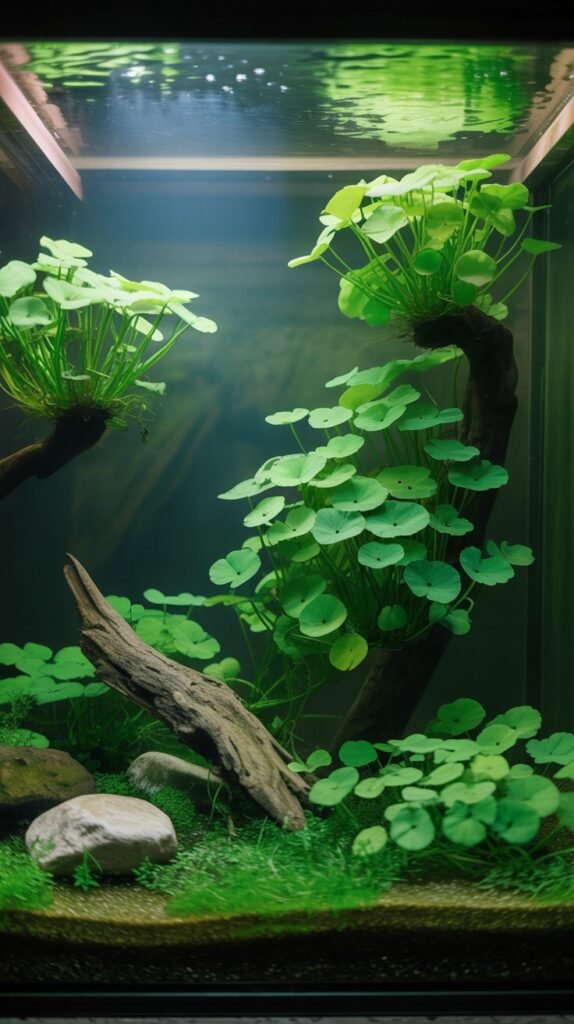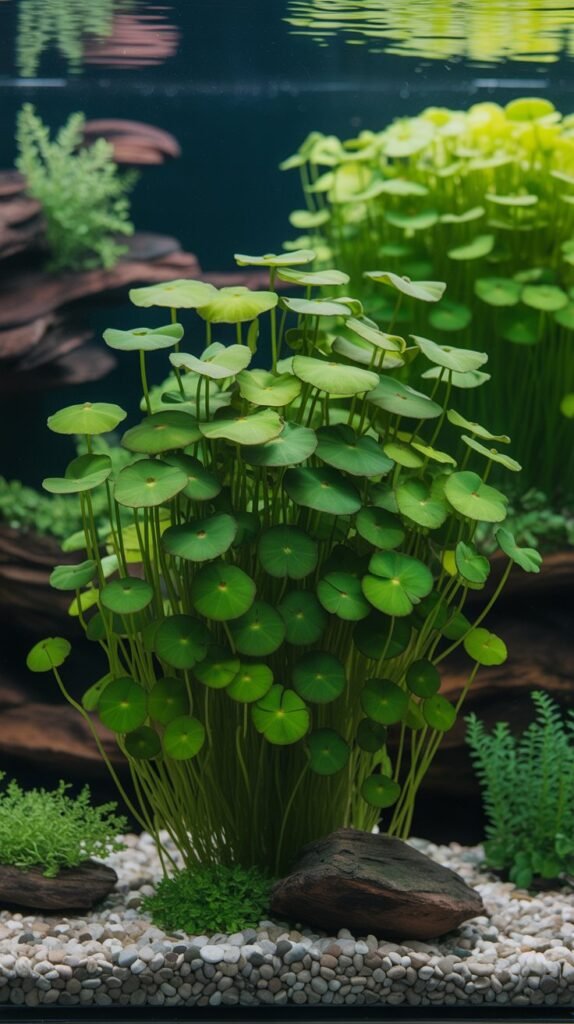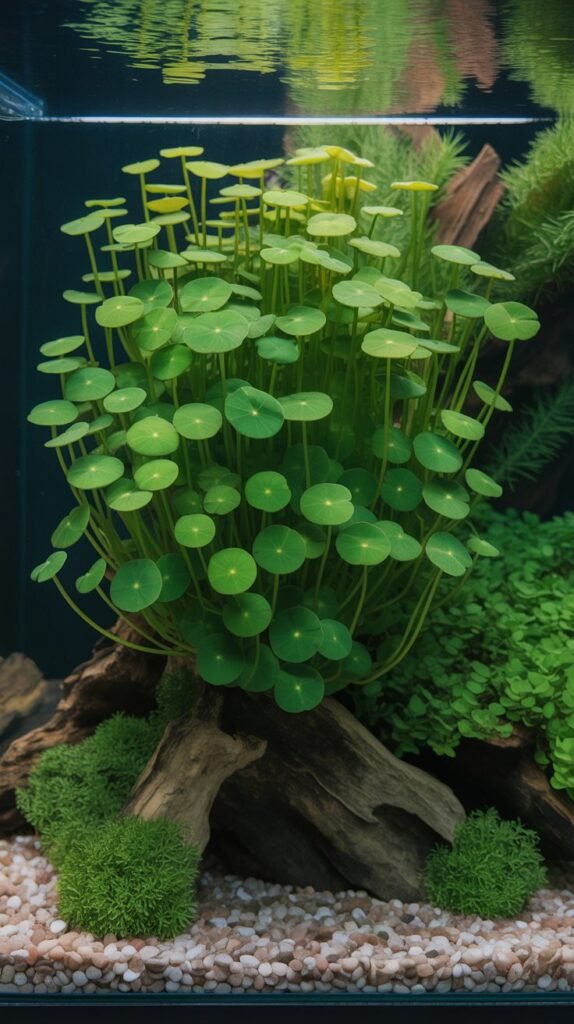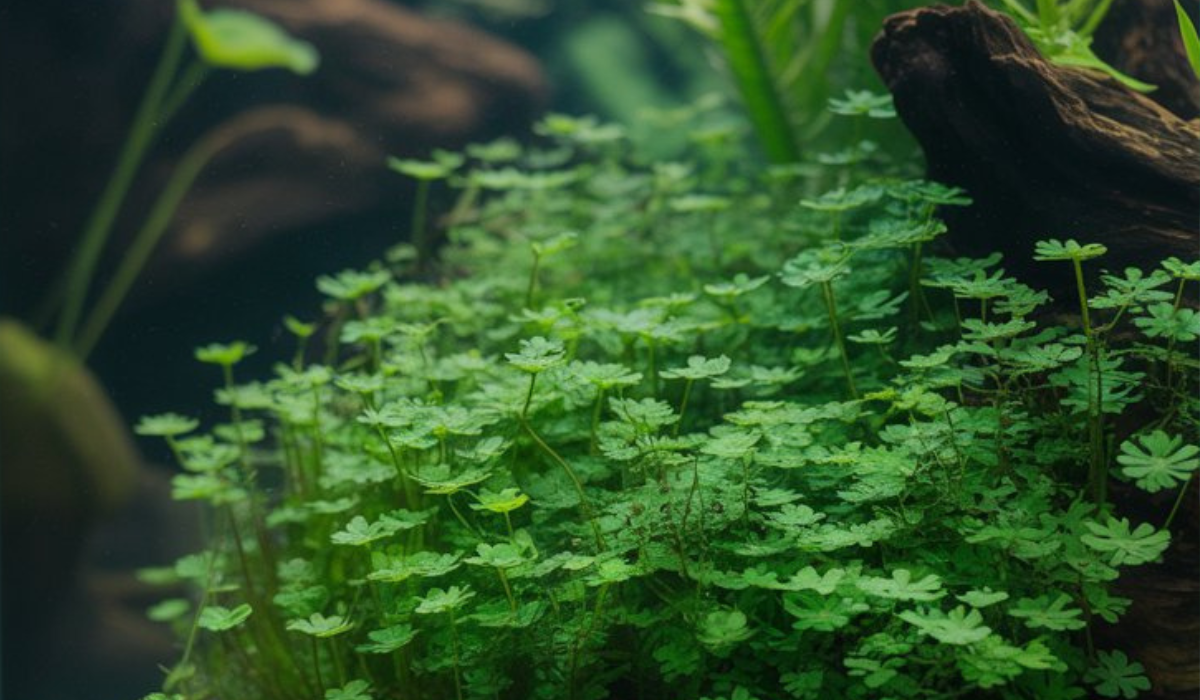Aquarium plants play a vital role in creating a balanced and visually stunning underwater ecosystem. One of the lesser-known yet increasingly popular aquatic plants among aquarists is Marsilea crenata. This versatile carpeting plant is loved for its lush greenery, resilience, and unique growth pattern that can transform a plain tank into a vibrant aquascape.
If you are planning to set up an aquarium with Marsilea crenata, this comprehensive guide will walk you through everything—its origin, growth requirements, planting techniques, maintenance, propagation, and aquascaping potential.
What is Marsilea Crenata?
Marsilea crenata is a creeping aquatic fern belonging to the Marsileaceae family. Unlike traditional stem plants, it grows horizontally and produces small clover-like leaves, making it an excellent foreground carpeting plant for aquariums.
- Scientific Name: Marsilea crenata
- Common Names: Clover fern, Water clover, Mini four-leaf clover
- Type: Aquatic fern (rhizomatous plant)
- Placement: Foreground and carpeting plant
- Growth Speed: Moderate
- Lighting Needs: Low to medium
- CO₂ Requirement: Low to moderate, but thrives with supplementation

Its versatility makes it a beginner-friendly plant while also appealing to advanced aquascapers who want a natural, lawn-like carpet in their tanks.
Natural Habitat of Marsilea Crenata
Marsilea crenata originates from Southeast Asia, where it thrives in shallow water bodies such as rice paddies, ponds, marshes, and wetlands. It is an amphibious plant, meaning it can grow both submerged (underwater) and emersed (above water in moist soil).
This adaptability makes it well-suited for aquariums, paludariums, and even as an ornamental plant in terrariums. In aquariums, it stays compact and forms dense green carpets, but in emersed setups, it develops taller clover-like leaves.
Why Choose Marsilea Crenata for Your Aquarium?
Marsilea crenata offers several benefits for both aquascapers and fishkeepers:
- Beautiful Carpeting Effect – Creates a lush, green lawn-like carpet in the foreground.
- Low Maintenance – Requires less demanding care compared to other carpeting plants like Glossostigma or Monte Carlo.
- Versatile Growth – Adapts to different water conditions and lighting levels.
- Oxygenation – Improves water quality by releasing oxygen and absorbing excess nutrients.
- Fish & Shrimp Shelter – Provides hiding spots for shrimp, fry, and bottom-dwelling fish.
- Algae Control – Competes with algae for nutrients, helping maintain a balanced ecosystem.
Aquarium Requirements for Marsilea Crenata
To successfully grow Marsilea crenata in your aquarium, you need to provide the right conditions.
1. Tank Size
- Works well in nano tanks (10 gallons) and larger aquariums.
- For full carpeting, larger tanks may require multiple portions.
2. Lighting
- Low to medium light is sufficient.
- Under high light, it grows compact and spreads faster.
- Under low light, leaves may grow taller and less dense.
3. CO₂ Injection
- Not strictly required but highly recommended for lush growth.
- With CO₂, Marsilea crenata spreads faster and forms a denser carpet.
4. Substrate
- Nutrient-rich substrates (ADA Amazonia, Fluval Stratum, Tropica Soil) encourage healthy root growth.
- Root tabs can be added in inert substrates like sand or gravel.
5. Water Parameters
- Temperature: 20–28°C (68–82°F)
- pH: 6.0–7.5
- Hardness: Soft to moderately hard water
6. Filtration & Flow
- Gentle to moderate flow works best.
- Avoid strong currents that may uproot young plants.
How to Plant Marsilea Crenata in an Aquarium

Planting Marsilea crenata properly ensures healthy establishment and faster carpeting.
Step-by-Step Planting Guide
- Preparation – Trim long roots and separate the plant into small clumps (3–5 leaves each).
- Planting Depth – Insert each clump into the substrate, just deep enough to cover roots.
- Spacing – Leave about 2–3 cm between clumps to allow natural spreading.
- Initial Care – Keep lighting moderate and avoid drastic water changes for the first two weeks.
Over time, runners will spread across the substrate, filling gaps and forming a dense carpet.
Growth Patterns of Marsilea Crenata
Marsilea crenata is slower growing compared to plants like dwarf hairgrass or Monte Carlo, but it is far more resilient.
- With CO₂ and high light – Spreads rapidly, forming a compact, lush carpet.
- Without CO₂ and low light – Grows taller with larger leaves, resembling clover rather than a carpet.
- Emersed growth – Produces four-leaf clover-like leaves, often used in terrarium setups.
Patience is key—once established, it requires minimal maintenance.
Trimming and Maintenance
To keep Marsilea crenata looking attractive:
- Regular Trimming – Trim the top leaves with aquascaping scissors to maintain a carpet shape.
- Prevent Overgrowth – If left untrimmed, it may grow taller and overshadow foreground areas.
- Nutrient Balance – Ensure regular fertilization to prevent yellowing leaves.
- Cleaning – Remove dead or melting leaves to prevent algae buildup.
Propagation of Marsilea Crenata
Propagation is straightforward. Marsilea crenata spreads naturally through runners.
- You can manually divide clumps and replant them in other areas.
- Over time, it will cover bare spots and create a uniform carpet.
- If you want faster spread, trim tall leaves to encourage horizontal runner growth.
Common Problems with Marsilea Crenata

Like any aquarium plant, Marsilea crenata can face issues if not properly cared for.
- Slow Growth – Normal for this plant, but adding CO₂ and good lighting speeds it up.
- Yellowing Leaves – Caused by nutrient deficiencies, especially iron or nitrogen.
- Melting After Planting – Common adaptation phase; new submerged leaves will regrow.
- Overgrowth – If not trimmed, it may grow upright instead of spreading.
- Algae Growth – Poor water quality or excess nutrients can lead to algae on leaves.
Aquascaping with Marsilea Crenata
Marsilea crenata is highly versatile in aquascaping designs.
Foreground Carpet
- Perfect for creating a natural grass-like carpet in the front section of the tank.
Pathway Effect
- Plant in strips to mimic garden-like paths or open fields in aquascapes.
Nano Aquariums
- Works well in small tanks where larger carpeting plants may overwhelm the layout.
Combination with Hardscape
- Complements driftwood, stones, and bonsai-style aquascapes.
- Blends well with mosses and other foreground plants.
Marsilea Crenata vs. Other Carpeting Plants
| Plant | Growth Speed | Difficulty | Light Requirement | CO₂ Need | Appearance |
|---|---|---|---|---|---|
| Marsilea crenata | Moderate | Easy | Low–Medium | Optional | Clover-like carpet |
| Glossostigma elatinoides | Fast | Moderate | High | Recommended | Dense lawn-like |
| Micranthemum Monte Carlo | Fast | Easy | Medium | Recommended | Thick, vibrant carpet |
| Dwarf Hairgrass | Fast | Moderate | Medium–High | Recommended | Fine, grass-like carpet |
Marsilea crenata stands out because of its adaptability and ability to grow under low-tech setups, making it suitable for beginners.
Tank Mates for Marsilea Crenata
Marsilea crenata is safe for most community tank setups.
Compatible Tank Mates
- Shrimp (Cherry shrimp, Amano shrimp)
- Small schooling fish (Tetras, Rasboras, Guppies)
- Bottom dwellers (Corydoras, Otocinclus)
- Snails (Nerite snails, Mystery snails)
Avoid
- Large digging fish (Goldfish, Cichlids) that uproot plants.
- Herbivorous species that eat delicate leaves.
Fertilization for Marsilea Crenata
To maintain healthy growth:
- Liquid Fertilizers – Supply micronutrients like iron and potassium.
- Root Tabs – Provide macronutrients directly to the roots.
- CO₂ – Optional but accelerates carpeting.
Balanced fertilization ensures vibrant green leaves and prevents nutrient deficiencies.
Step-by-Step Care Summary for Marsilea Crenata
- Choose a nutrient-rich substrate.
- Provide low to medium lighting (increase for compact carpets).
- Add CO₂ for faster, denser growth (optional).
- Plant in small clumps 2–3 cm apart.
- Perform regular trims to maintain shape.
- Supplement with fertilizers (root tabs + liquid).
- Be patient—growth may be slow initially but rewarding long term.
Conclusion
Marsilea crenata aquarium setups bring elegance, natural beauty, and a lush green carpet effect to freshwater tanks. Its adaptability to different lighting, low maintenance, and resilience make it an excellent choice for both beginners and advanced aquascapers. Whether you’re designing a nano tank, a nature-style aquascape, or a shrimp habitat, Marsilea crenata fits perfectly.
With proper care, patience, and trimming, this plant will transform your aquarium into a stunning underwater landscape.
FAQs About Marsilea Crenata Aquarium
Q1: Does Marsilea crenata need CO₂ to grow?
No, Marsilea crenata can grow without CO₂, but growth will be slower. With CO₂, it spreads faster and creates a denser carpet.
Q2: How long does it take for Marsilea crenata to carpet an aquarium?
On average, it takes 6–10 weeks under good conditions, but with CO₂ and high light, it can carpet faster.
Q3: Can Marsilea crenata grow in low light aquariums?
Yes, it can grow in low light, but the leaves will be taller and less compact.
Q4: Why is my Marsilea crenata turning yellow?
Yellowing often indicates nutrient deficiencies, especially iron or nitrogen. Regular fertilization can fix this.
Q5: Is Marsilea crenata suitable for beginners?
Yes, it is one of the easiest carpeting plants for beginners due to its low care requirements.
Q6: Can I use Marsilea crenata in a shrimp tank?
Absolutely! Shrimp love grazing on the plant and using it as cover.
Q7: How do I propagate Marsilea crenata?
It propagates through runners. You can also divide clumps and replant them in other areas.

